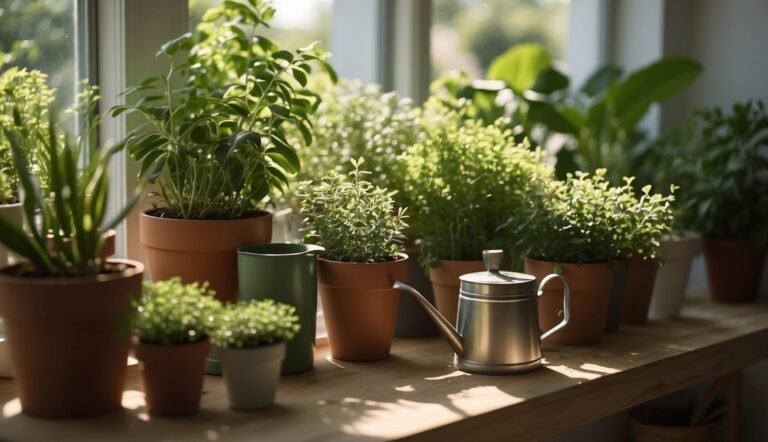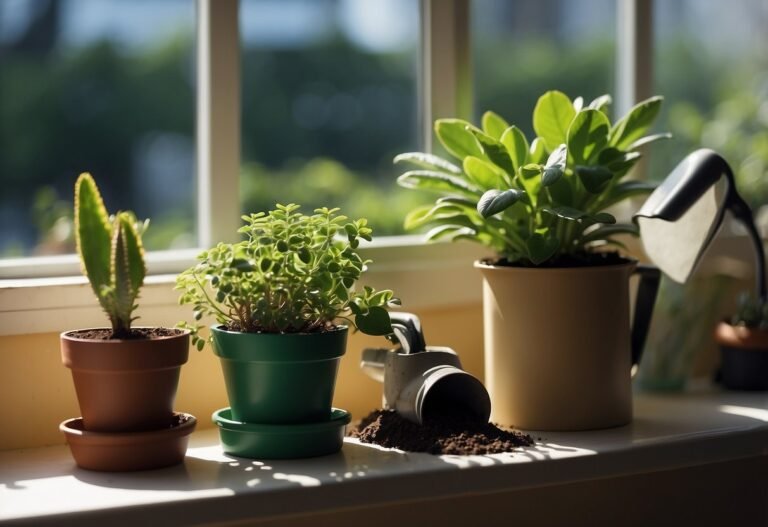Selloum: Essential Care Tips for Healthy Growth
Selloum is a popular plant known for its large, deeply lobed leaves and easy care, making it an attractive choice for homes and offices. I appreciate how this plant can reach impressive heights indoors, sometimes growing up to 6 feet tall, while providing a lush, tropical feel to any space.
Its bold green leaves really draw the eye, bringing life and texture wherever I place it.

What I find most useful about Selloum, also called Philodendron selloum or Tree Philodendron, is that it handles different light conditions like medium to bright indirect light without much fuss. This makes it an excellent option for people who want a statement plant but don’t want something high maintenance.
If you’re looking for a houseplant that stands out and is easy to care for, Selloum is worth considering. It can add a fresh and calming atmosphere to my living or work space, especially since it thrives with just a bit of regular attention.
To learn more details about its growth and care, I recommend checking out this detailed guide on care and growth and getting familiar with its tropical style.
Selloum Overview

Selloum is a tropical plant with large, deeply lobed leaves and a strong presence in both gardens and homes. It is appreciated for its unique appearance, multiple names, and South American origins.
Botanical Characteristics
I notice that Selloum, often called Philodendron selloum or Philodendron bipinnatifidum, has a striking look. Its leaves are large, shiny, and deeply lobed, which makes them stand out in any space.
These leaves can reach up to three feet in length when the plant is mature. The plant usually grows as a shrub.
Its thick, woody stem and aerial roots help support its size as it spreads out, creating a dramatic effect. As an indoor plant, Selloum typically grows up to 5 feet tall, but outdoors it can get even larger.
Selloum prefers environments with filtered sunlight and thrives in humid conditions. Temperature ranges from 18 to 27 degrees Celsius are ideal for its growth.
I find that regular watering and good drainage are essential because waterlogged soil can harm the roots.
Common Names and Synonyms
I often come across several names for Selloum in stores and gardening resources. The most recognized scientific name is Philodendron bipinnatifidum.
It is also commonly referred to as Philodendron selloum. Other names that may be used are Lacy Tree Philodendron and Split-Leaf Philodendron.
These alternate names often reflect the plant’s appearance, such as its lacy, divided leaves or tree-like form. It is important to use the botanical name when searching for care instructions or plant details to avoid confusion.
Below is a quick list of common names:
- Lacy Tree Philodendron
- Split-Leaf Philodendron
- Philodendron selloum
- Philodendron bipinnatifidum
Origin and Natural Habitat
Selloum is native to the warm, rain-soaked regions of South America, particularly Brazil and nearby areas. In the wild, I see it growing on the forest floor, where it receives filtered sunlight under the tree canopy.
It thrives in environments with high humidity and well-draining, rich soil. The rainforests provide the perfect conditions, with frequent showers and protection from direct harsh light.
Selloum is well adapted to these conditions, developing broad leaves to capture lower light and aerial roots to support stability and nutrient absorption from the moist ground.
Cultivation and Care

I have found that providing the right light, water, soil, and general upkeep is essential for healthy Selloum growth. Each factor impacts how well the plant thrives indoors and outdoors.
Light and Temperature Requirements
I place Selloum in areas with medium to bright, indirect sunlight. Direct sunlight is too intense and can scorch the leaves, while low light causes slow growth and darker green leaves.
An eastern or northern window works well for me. Ideal temperatures for Selloum are between 65°F and 80°F (18°C to 27°C).
Temperatures below 55°F (13°C) can stress the plant, so I make sure to avoid cold drafts or sudden temperature drops. Philodendron Selloum prefers stable warmth year-round and does not tolerate frost.
I move my plant away from windows during cold months and avoid placing it near air conditioning vents or heaters, as extreme changes in temperature or dry air can damage the leaves. For more tips on ideal light and temperature, I use the advice at this Philodendron Selloum care guide.
Watering and Humidity
I water my Selloum when the top inch of soil feels dry. Overwatering is a common problem, so I always check the soil before adding water.
The roots will rot if the pot doesn’t drain well or if the plant sits in water. During the growing season (spring and summer), I water more often, while in fall and winter, I let the soil dry out more between waterings.
Selloum enjoys a humid environment, ideally above 50%. If my indoor air is dry, especially in winter, I use a humidity tray or humidifier.
Misting the leaves lightly can help, but I avoid soaking them to prevent fungal issues. Consistent humidity keeps the foliage lush and prevents brown leaf edges.
Soil and Fertilization
A loose, well-draining potting mix is best for Selloum. I use a mix of peat, perlite, and pine bark in equal parts to help keep the roots healthy and prevent soggy soil.
This kind of soil drains excess water but holds enough moisture for the plant. From spring to early fall, I feed my Selloum every 4–6 weeks with a balanced liquid fertilizer diluted to half strength.
Overfertilizing can burn the roots and leaves, so I never use more than the label recommends. In winter, I skip application since the plant’s growth slows down.
If I notice slow growth or yellowing leaves, it’s usually time to check my feeding or repot into a fresh mix. Regular, moderate nourishment and the right soil structure keep my Selloum robust.
Pruning and Maintenance
I prune my Selloum to control size, improve air flow, and remove damaged leaves. Using clean, sharp scissors or pruners, I cut leaves close to the base.
This encourages new growth and prevents disease. Large, older leaves may naturally yellow and die.
I remove them to keep the plant neat. Pruning also lets me shape the plant so it fits better in my space.
I always wear gloves because the sap can cause skin irritation. Wiping the leaves with a damp cloth cleans off dust and helps the plant breathe better.
Regular checks for pests like spider mites or mealybugs are part of my routine, ensuring my Selloum stays healthy and free from problems. See more on proper pruning and maintenance for Philodendron Selloum.
Common Challenges and Solutions
When I care for a Selloum plant, I pay special attention to pest issues, disease prevention, and growth concerns. Addressing these problems quickly is important for keeping my plant healthy and looking good.
Pest and Disease Management
I often see pests like spider mites, aphids, or mealybugs on my Selloum. Most of these insects drain plant sap and cause leaves to curl, yellow, or develop brown spots.
I regularly check both sides of the leaves and stems for small bugs or sticky residue. A gentle spray of insecticidal soap or neem oil takes care of light infestations.
For more serious problems, I use rubbing alcohol on a cotton swab to wipe away pests directly. Fungal diseases also occur if my plant stays too wet.
I improve air flow, remove infected leaves, and avoid getting water on the foliage to limit spread. More details on preventing dampness and improving airflow are covered by Cafe Planta’s guide to Selloum problems.
I always quarantine new plants, and clean tools before pruning to stop both pests and diseases from spreading.
Growth Issues and Troubleshooting
My Selloum sometimes develops yellow leaves, which usually signals overwatering or nutrient issues. If the soil stays wet, roots may rot, causing stunted growth and mushy stems.
I reduce watering and let the top inch of soil dry before adding more water. Uneven light makes stems bend or leaves droop.
I rotate my plant every few weeks so it gets light on all sides, following advice from Nouveau Raw’s tips for Hope Selloum. For healthy growth, I also feed my plant with a diluted, balanced fertilizer every month during spring and summer.
If leaves develop brown edges or tear, this may be due to drafty air or low humidity. I keep my plant away from cold windows and heat vents, and sometimes use a tray of water nearby to raise humidity.
Decorative and Functional Uses
Selloum stands out for its dramatic foliage and ability to improve indoor air quality. It adapts to homes, offices, patios, and gardens, making it a flexible choice for decorating and enhancing different spaces.
Indoor and Outdoor Applications
When I add Selloum to my home, I notice its large, deeply split leaves can fill empty corners and make rooms feel lush without much effort. It thrives in mid-to-low light environments, so I don’t need to place it right next to a window.
This plant is also known to help clean the air, removing some toxins and increasing oxygen levels, which can make my living spaces healthier and more comfortable. I find Selloum works well next to furniture, as the leaf shape softens edges and adds a touch of the tropics.
Because it’s easy to grow and maintain, I recommend it for both new and experienced plant lovers. For outdoor spaces like covered patios or shaded porches, Selloum gives a fresh and vibrant look without needing direct sun.
Landscaping with Selloum
In my experience, Selloum is a great addition to garden beds, especially in shaded areas under trees or along the north side of a house. Its bold leaves work well as a statement plant, drawing the eye without overwhelming other features.
I use it for creating privacy screens or as a tropical foundation plant in garden borders. Here’s a quick list of popular landscape uses for Selloum:
- Tropical foundation plant
- Privacy screen
- Accent in shaded spots
- Background for smaller plants
I appreciate that it matches different themes, from lush tropical gardens to more structured landscapes. If I want a budget-friendly way to make my yard look fuller and more interesting, Selloum is a top choice for its adaptability and minimal care needs.
For inspiration, the plant is featured in budget-friendly landscaping ideas and is noted for helping fill large spaces in shaded areas.
Frequently Asked Questions
I often receive questions about Philodendron selloum, especially about how to care for it indoors, watering needs, growth habits, naming differences, and mature plant size. Here, I address some of the most common concerns with precise and clear information.
How do you care for a Philodendron selloum as an indoor plant?
I place my Philodendron selloum in bright, indirect light. Direct sunlight can burn the leaves, so I avoid it.
I keep the soil lightly moist but never soggy and use a pot with drainage holes. Philodendron selloum prefers moderate humidity and temperatures above 60°F (16°C).
I also wipe the leaves to remove dust and check them regularly for pests.
What is the average growth rate of a Philodendron selloum?
This plant grows at a moderate pace under the right conditions. I have noticed my selloum can put out several new leaves each year when it has enough light, warmth, and humidity.
How often should a Selloum plant be watered?
I water my Selloum when the top two inches of soil feel dry. This usually means watering about once a week, but it can vary with indoor conditions and season.
In winter, I find it needs less water—sometimes every two to three weeks—to avoid overwatering. More details are available at Greenery Unlimited’s watering guide.
What are the common names for Philodendron selloum?
This plant is most often called “Tree Philodendron,” “Philodendron Hope,” or just “Selloum.” Sometimes it is also called “Lacy Tree Philodendron” due to its large, deeply lobed leaves.
What is the difference between Philodendron hope and Philodendron selloum?
“Philodendron hope” and “Philodendron selloum” are names often used for the same plant, but there are some differences. “Hope” tends to refer to a smaller, more compact cultivar, while “Selloum” may grow larger leaves and a taller trunk.
However, many garden centers use the names interchangeably.
What are the size expectations for a fully grown Philodendron selloum?
A mature Philodendron selloum can reach up to 5 feet tall and spread out even wider, sometimes up to 8 feet across indoors. In the right outdoor environments, it can get even larger.
The leaves themselves can grow very big, giving the plant a dramatic, tropical look.



